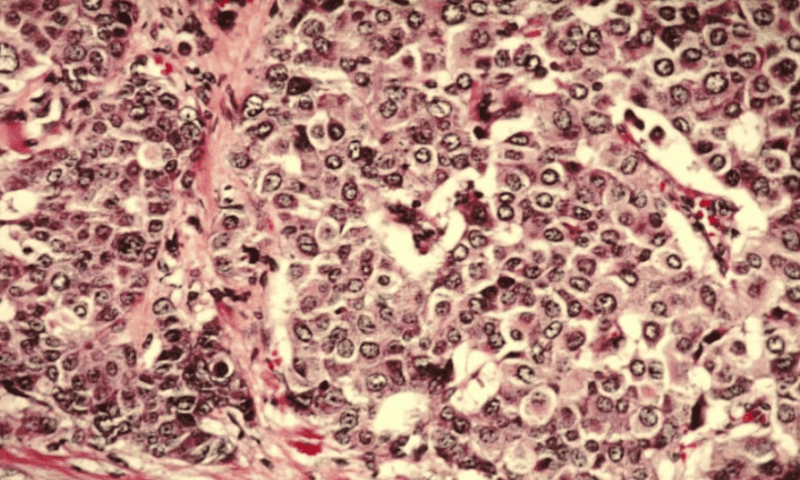A small molecule that indirectly targets the tough-to-drug MYC gene appears to work against breast and ovarian cancers in mice.
In an article published Oct. 25 in the Proceedings of the National Academy of Sciences, researchers from Baylor College of Medicine presented data showing that their drug 5D4, a new class of therapy called a TopBP1 inhibitor, could stop the growth of breast and ovarian tumors in mouse models. It worked even better when combined with the PARP 1/2 inhibitor talazoparib, marketed by Pfizer as Talzenna.
“It’s very exciting to have found a TopBP1 inhibitor that really stops cancer growth in cells and in animal models in the lab,” Fang-Tsyr Lin, M.D., Ph.D., first and co-corresponding author, said in a press release.
The new findings stem from more than a decade of research on TopBP1, a protein that the researchers previously described as a “convergent point” of several pathways involved in cancer development. They include one that promotes the expression of MYC, the protein products of which have been found to be deregulated in more than half of cancers in humans. MYC overexpression has been linked with worse outcomes in breast, blood, lung and other types of cancer, but inhibiting it directly has proven challenging.
The Baylor team knew from earlier experiments by other researchers that inhibiting TopBP1 had the effect of boosting expression of another gene, MIZ1, and that, downstream, MIZ1 expression limits MYC’s ability to perpetuate cancer.
“Thus, enhancement of MIZ1 activity can attenuate the [cancer-causing] activity of MYC and may be exploited as a therapeutic strategy,” the scientists reasoned in their paper. Given that suppressing TopBP1 frees up MIZ1, “targeting [TopBP1] may … result in the anti-MYC effect.”
Before they could see whether this worked in practice, the researchers needed to find a drug that could target exactly the right spot of the protein expressed by the TopBP1 gene. Testing thousands of compounds through a type of analysis called a molecular docking screen and further optimizing the hits gave them 5D4.
After validating the small molecule’s anti-TopBP1, anti-MYC and anti-cancer activity in cell studies, the researchers moved to testing 5D4 in mice. They injected ovarian cancer and breast cancer cells into two separate groups of animals, then dosed them with either 5D4 or a control solution every three days, giving three doses total. At the end of the period, they found that the drug reduced tumor growth in both of the models compared to controls. This was also the case for a second, more aggressive model of breast cancer with a high level of MYC overexpression.
Next, based on mechanistic and cell study evidence that suggested a TopBP1 inhibitor would have synergistic activity with PARP inhibitors, the researchers tried dosing talazoparib together with 5D4 in two separate mouse models of breast cancer, including one that had a mutation that made it resistant to PARP inhibitors. The results showed that cancer growth was inhibited with the combination to a greater degree than 5D4 alone and that tumors that were resistant to talazoparib were still responsive to 5D4.
The mice didn’t develop apparent side effects to the drugs in any of the experiments. One limitation to the study is that the mouse model used was immunocompromised, so it’s unclear how an intact immune response might affect treatment. However, based on the mechanism of PARP inhibitors, there’s reason to believe the combination approach might be even better in that instance, researchers pointed out, a possibility that they believe warrants further study.
The researchers plan to prepare 5D4 for use in humans, to optimize its anti-tumor effect in combination with other drugs and to reduce the potential for toxicities, Lin said in the press release.

